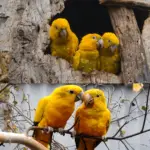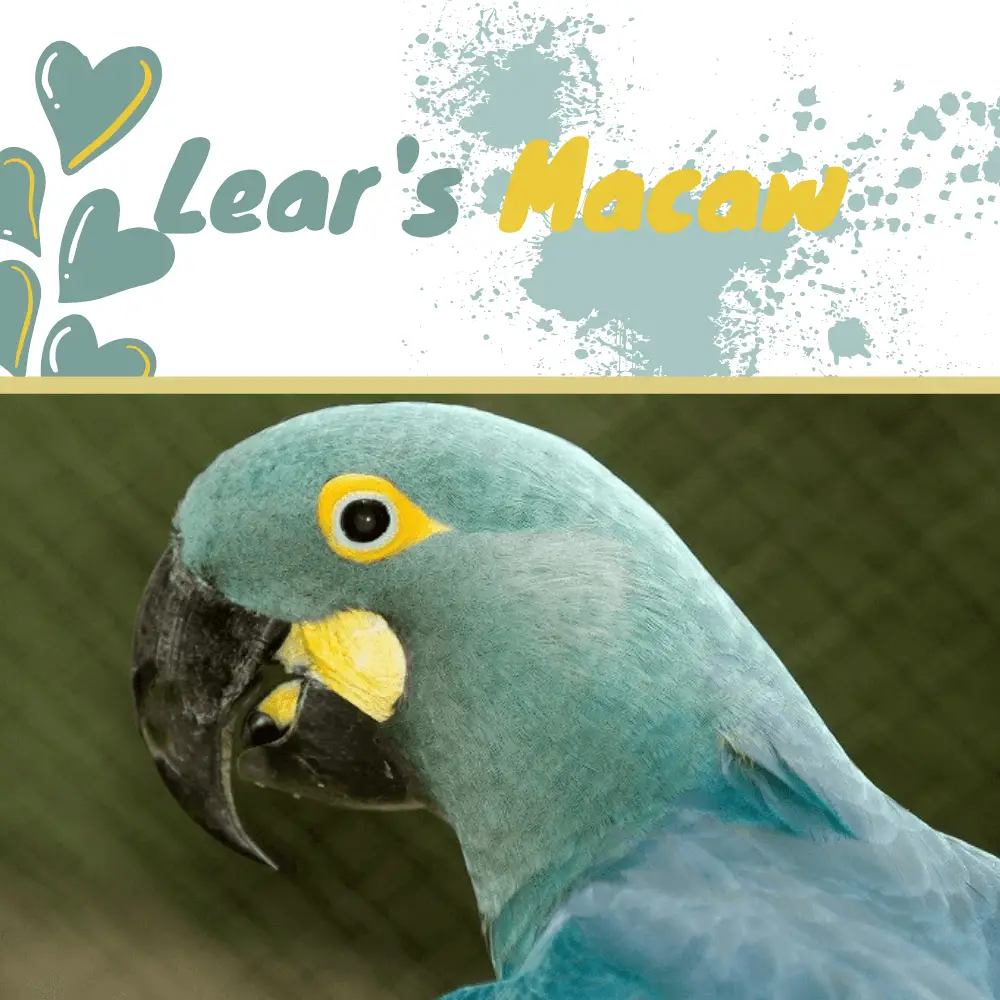
The Lear’s Macaw is a species in the Psittacidae family. Its scientific name is Anodorhynchus leari and in English, it is called Indigo Macaw, which is also known as macaw and macaw. It was named after the English artist, writer, and explorer, Edward Lear (1812-1888).
He painted a copy in his book “Illustrations of the Psittacidae family, or of the parrots” in 1828. It is worth remembering that at the time he specified the bird as being a Macrocercus Hyacinthinus, and not as a new species of macaw.
Lear’s macaw
known as the indigo macaw, is a large all-blue Brazilian parrot
- 1 Lear’s Macaw Distribution
- 2 Physical characteristics of the Lear’s Macaw
- 3 Lear’s Macaw feeding
- 4 Reproduction of the Lear’s Macaw
- 5 How to download or listen to songs of Lear’s Macaw
Distribution of the Lear’s Macaw
The Lear’s Macaw is an endemic bird in Brazil. It is found in northern Bahia and south of Raso da Catarina, which is in Bahia.
Its geographical distribution covers the municipalities of Jeremoabo, Canudos, Paulo Afonso, Santa Brígida, Euclides da Cunha, Monte Santo, Sento Sé, and Campo Formoso. Its habitat is in the caatinga region, using areas of walls and canyons of sedimentary rocks.
Environment Week – Lear’s Macaw
SOURCE: Loro Parque
Lear’s Macaw Habitat
The Lear’s Macaw lives in the “caatinga”, an area with thorny bushes and clumps of palm trees of the genus Syagrus which constitute the main food of this species.
It breeds and nests on sandstone cliff faces, outcrops and in rugged gorges, sites also used as roosts.
Lear’s Macaw Behavior
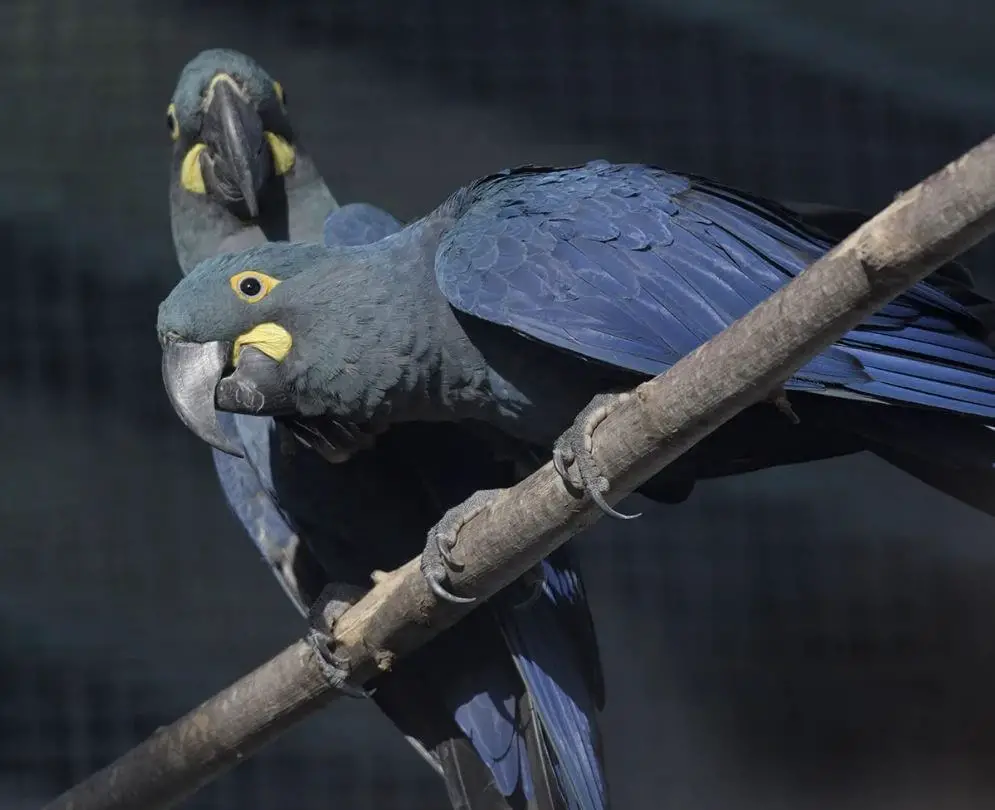
The Lear’s Macaw feeds mainly on the nuts of Syagrus coronata palms, but it also consumes the fruits of various other plants, Agave flowers, Melanoxylon seeds and is occasionally startled in corn crops.
It forages in groups of 3-4 birds in palm trees, about 5-30 meters apart. Some of them act as “sentinels” while the group feeds, but the roles are regularly alternated.
The Lear’s Macaw is a gregarious species. Macaws congregate at communal roosts on cliff faces. They roost in burrows in small groups of 3-4 birds. A few individuals may sleep on ledges or climb the cliff.
They leave the roosts before dawn and disperse in small groups to reach their feeding grounds. They return to the cliffs just after sunset. They fly, calling loudly, but they alight first on nearby trees and only reach roosts after dark.
The Lear’s Macaw is resident and stays all year round near the cliffs.
Physical characteristics of the Lear’s Macaw
It is considered a medium-sized bird, reaching up to 75 centimeters in length and weighing 940 grams. Its main physical characteristics are the head and neck have a blue-green tone, the belly is faded blue, with wings and tails in a cobalt blue tone.
They have the ring around the eye in a light yellow color, with white or slightly bluish eyelids. The skin around the jaw is drop-shaped. The male and females of Lear’s Macaw are similar, that is, they have no visual differences between them.
This species is considered “endangered” according to CITES criteria. The main reason for the species’ decline was the illegal trafficking of these birds to private breeding sites in Brazil and abroad.
The destruction of their habitat, mainly affecting food areas, is also an important factor. There are currently just over 1000 individuals in nature.
As in many species of parrots, Lear’s Macaw is gregarious, having the behavior of staying in groups. Two sleeping and nesting sites are known, both in the Raso da Catarina ecoregion, consisting of natural cavities in sandstone walls.
Lear’s Macaw Description
Length: 75 cm
Weight: 950 g
The Lear’s Macaw has metallic blue plumage. Head and neck are slightly tinged greenish. The upper side of the wings is of a more intense blue, including on-the-flight feathers.
The long graduated tail is also blue. On the underparts, the breast shows slight russet wash. Flight feathers and tail are dark greys.
On the head, we can see a pale yellow, semi-circular bare skin area at the base of the lower mandible. The hooked bill is blackish-grey. The eyes are dark brown, surrounded by yellow bare skin eye-ring. Legs and feet are dark greys.
Male and female are identical. The juvenile resembles adults, but the bare facial skin is duller yellow and the tail is shorter.
Lear’s Macaw Diet
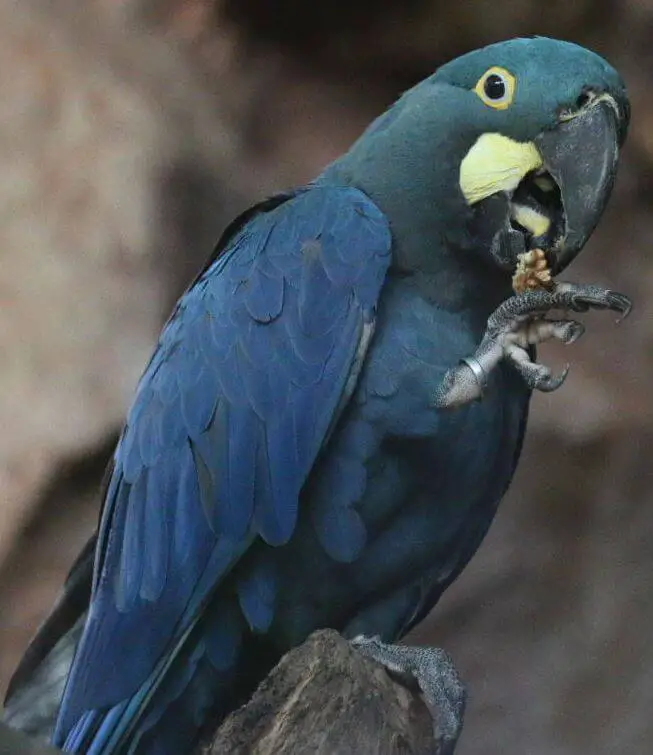
The main food of Lear’s Macaw is the fruit of the Licuri palm. An individual can consume, on average, 120 Licuri coconuts per feeding period.
This represents, on average, the consumption of 250 Licuri fruits per day. The food search activity takes place mainly between 6 am and 9 am and from 2 pm to 4 pm.
Lear’s Macaw Reproduction
This macaw becomes sexually reproductive at 3 years of age. It starts reproductive activity in September or October, with the exploration of cavities in the walls, ending in April, when the last pups of Lear’s Macaw leave the nests.
It nests in pre-existing cavities in rocky walls formed by sandstone. The same wall that contains several cavities can house several couples in reproductive activity.
Usually, 2 chicks are born at a time and the incubation lasts for around 30 days. After birth, the chicks spend about 3 months in the nest, under the care of their parents, until they venture out on the first flight. The municipality of Jeremoabo, in Bahia, is one of the main reproductive sites of the species.
Lear’s Macaw – ACTP e.V.
SOURCE: ACTP e.V.
Price of a macaw
The Ara parrot is a very expensive bird, which is why its adoption must be carefully considered. We are not talking about a bird at a few tens of dollars but rather at a few hundred!
On average, the price of a breeding Macaw will rise between 750$ and 2900$ depending on the breeding, the species, the age, and the origin of the animal.
The price of a second-hand macaw parrot, obtained by an organization or through another individual, is generally less expensive. Prices vary but it is rare to find one for less than 450$.
Lear’s Macaw Conservation Status
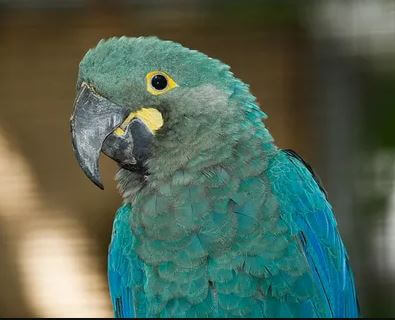
Lear’s Macaw is highly threatened by habitat loss, especially food palms which are now less numerous due to livestock.
The species is vulnerable to trapping for the illegal trade, and although this practice has been greatly reduced, it still continues today.
These macaws are sometimes persecuted when feeding in corn crops. Food hunting also remains a threat.
The Lear’s Macaw has a restricted range with only two main colonies, but a few small new populations have been discovered.
The global population is estimated at 1263 individuals, with a large proportion of immature. Mature individuals are roughly estimated at 228 macaws.
The population of the species is located in a range of 250/999 mature individuals.The Lear’s Macaw now has an increasing population thanks to very active conservation measures. But currently, the species remains Endangered.
Lear’s Macaw Songs
The Lear’s Macaw emits kinds of croaks and strident cries “gree-ah” or “ara-ara…trrahra” less hoarse and weaker than those of the Hyacinth Macaw.
How to download or listen to songs of Lear’s Macaw
You can download the corner of Lear’s Macaw on our website. To do this, just right-click on the name of the corner, then click on “Save Link As…” and choose the place where it will be saved. You can also listen, just click on the play button.
Lear’s macaw singing

